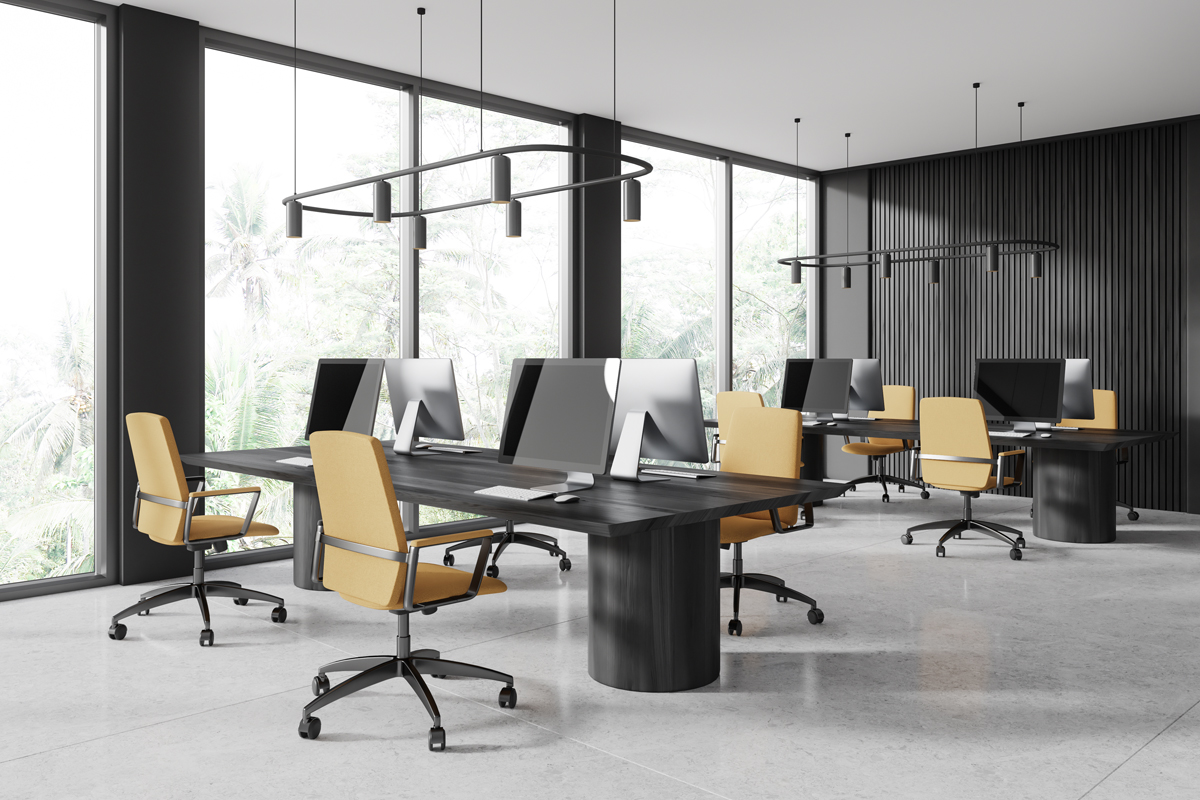Sitting at a desk for long periods of time, using a computer and performing tasks can lead to physical discomfort if the furniture is not adapted to a person’s needs. Ergonomic furniture can minimise the strain on the spine, joints and muscles, improving overall well-being and work efficiency. Consider how to choose the right office furniture.
Chair: back support and correct posture
The right office chair can help reduce the strain on your spine and prevent the development of posture problems and back pain. Here are a few key features to look for when choosing a chair:
Height adjustment
An ergonomic chair should have the ability to be height adjustable. This allows you to adjust the chair so that your feet are on the floor at a 90-degree angle and your knees and hips are in line. This way you will maintain good posture and reduce the strain on your spine.
Lumbar support
The chair should have built-in lumbar support to help maintain the natural curve of the spine. This prevents back arching and reduces the risk of lumbar pain.
Backrest tilt
The back of the chair should be able to tilt back so that you can change your body position throughout the day. The tilt of the backrest can be around 100-110 degrees. This helps to relieve tension in your back muscles and relax your body during short breaks.
Armrests
Pay attention to the presence of armrests, which can be adjusted in height and width. They help to relieve the shoulder girdle, reducing arm and neck strain when working at the computer.
Desk: space for work and comfort
A desk should be comfortable, functional and conducive to productive work. When choosing a desk, it is important to consider its size, height and additional features.
Desk height
The optimal desk height is one where your forearms are parallel to the floor and your wrists are not tense. If the desk is too high or too low, it is uncomfortable and leads to muscle strain.
Size of the work surface
There should be enough space on the desk to comfortably accommodate all the items needed for work: computer, documents, stationery and other supplies. At the same time, it is important that the work surface is not too cluttered, as this causes discomfort and makes it difficult to perform tasks.
Adjustable desks
One of the modern solutions for offices are desks with the ability to work standing and sitting. They allow you to change your body position throughout the day, helping to reduce the strain on your back and legs. These desks encourage active work and avoid sitting in one position for long periods of time.
Accessories: small details for greater comfort
A desk and chair are not enough to create a truly ergonomic workplace. Various accessories and elements play an important role in increasing comfort and productivity in the workplace.
Monitor stand
The monitor should be at your eye level to avoid neck strain. If your desk doesn’t allow you to position your monitor properly, a stand can help you raise it to the right height. This also frees up extra space on your work surface.
Footrest
If the height of your desk or chair doesn’t allow your feet to stand comfortably on the floor, a footrest can solve the problem. It keeps your feet in the right position and helps improve circulation.
Mouse pad with wrist support
Special mousepads with soft support help to reduce strain on the wrists and prevent the development of carpal tunnel syndrome, which is common in those who spend a lot of time at the computer.
Choosing ergonomic office furniture is an important investment in your health and productivity. By creating a comfortable and healthy workspace, you will increase your productivity and improve your overall health.


